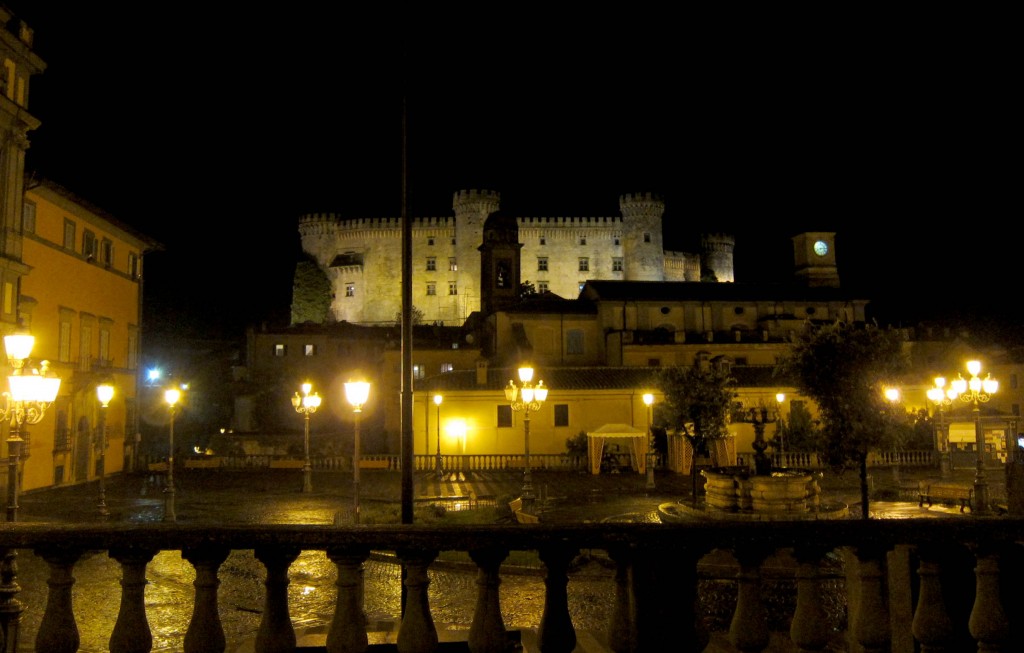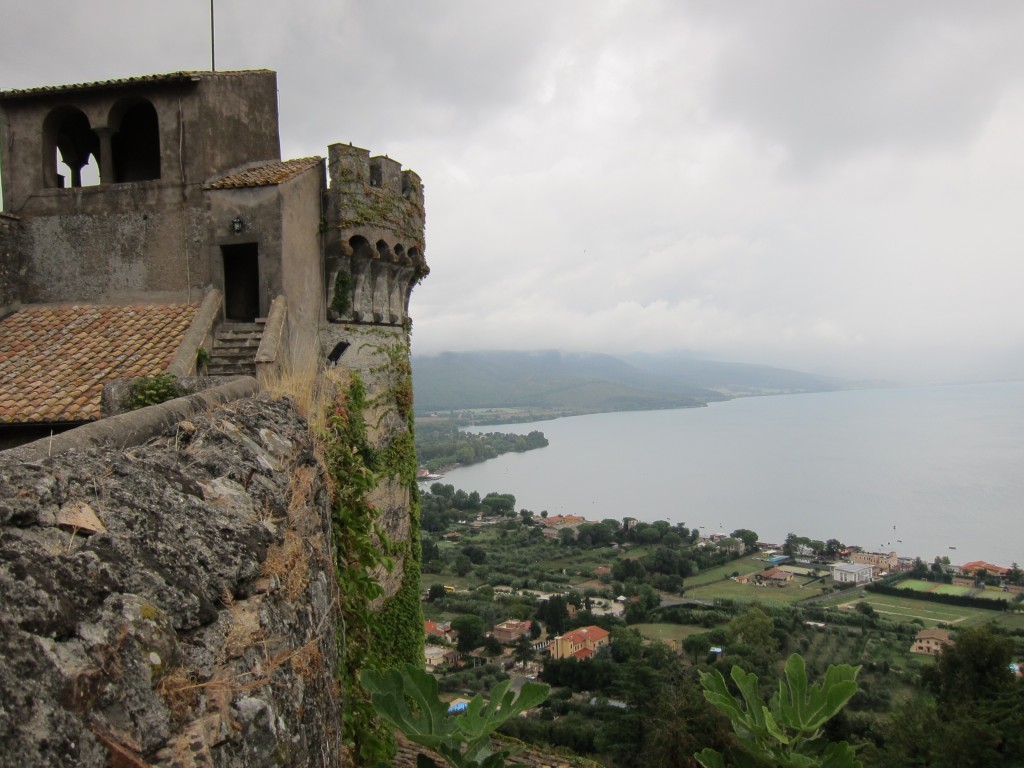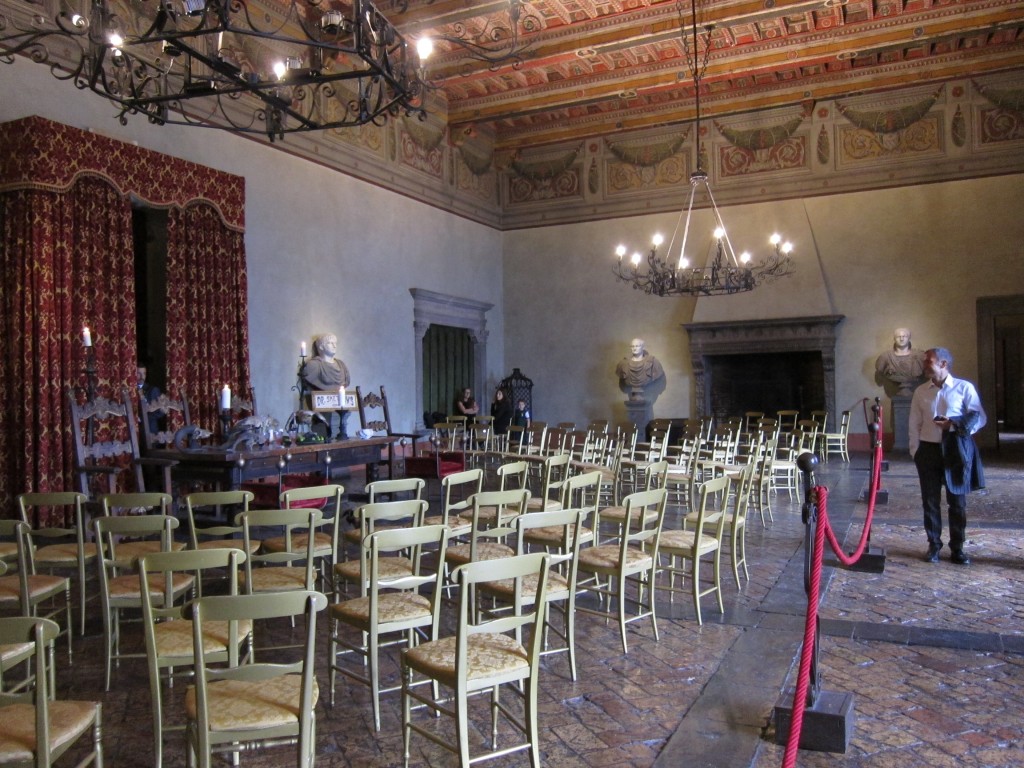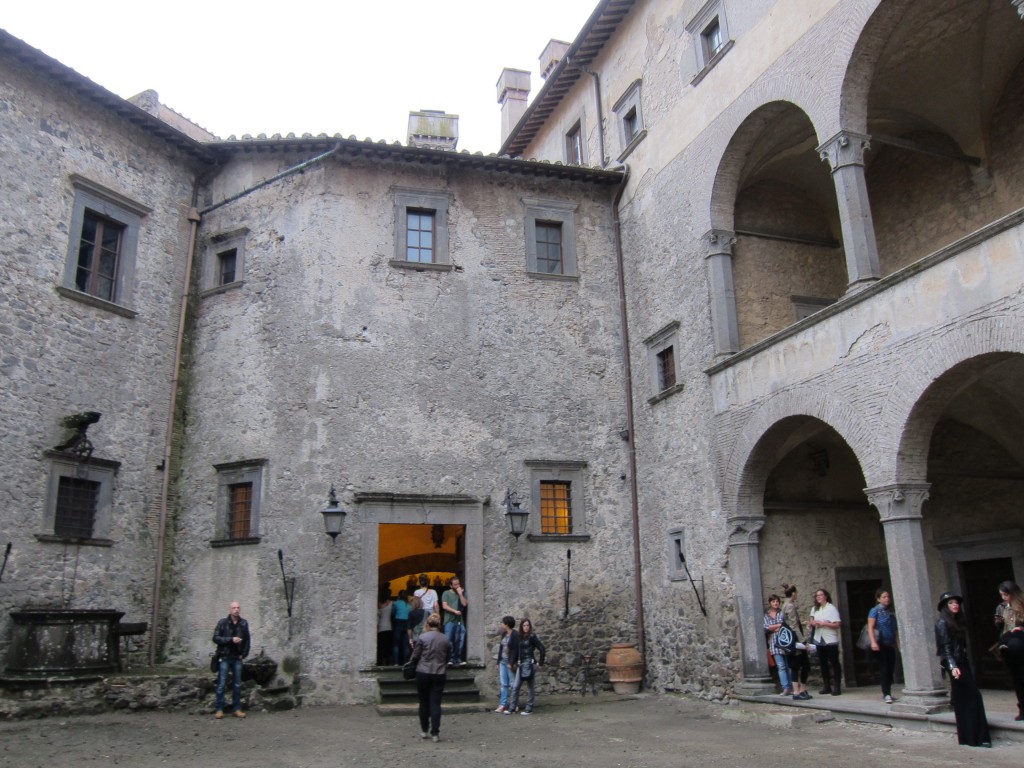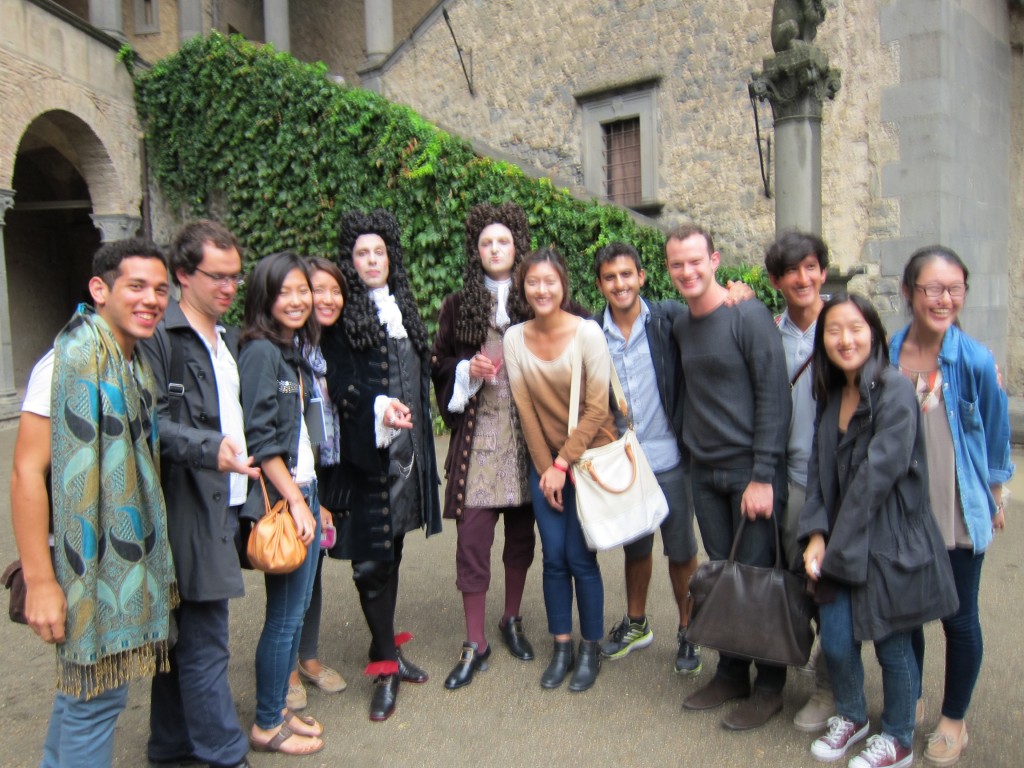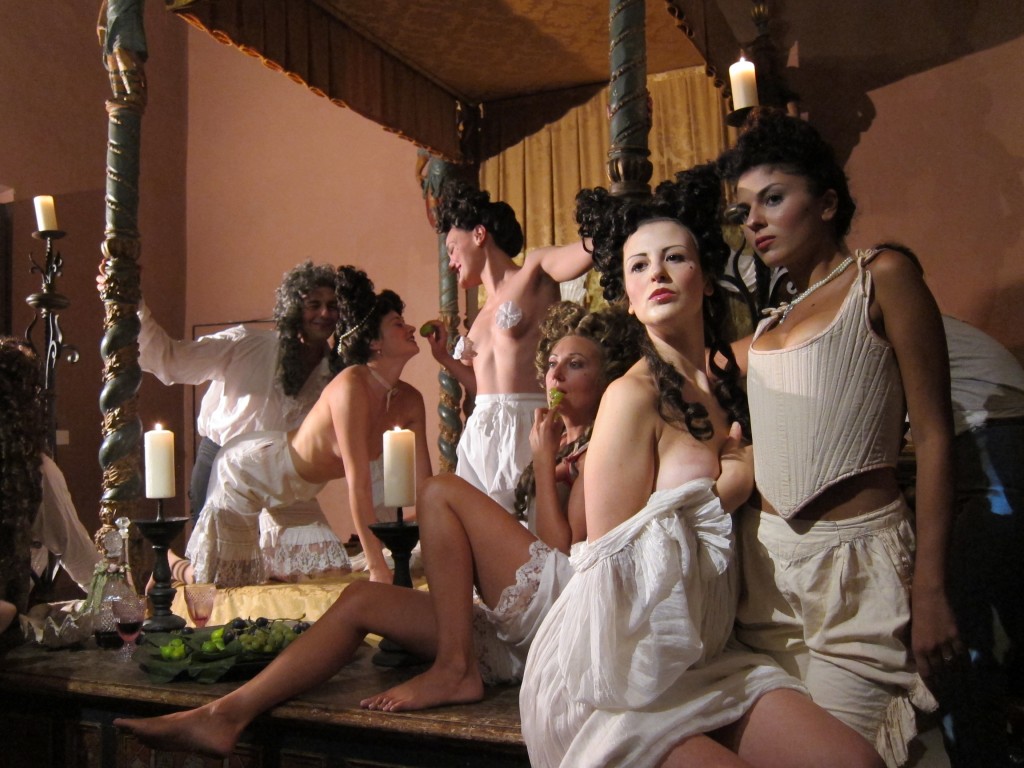Bracciano is a small town about 30 kilometers northwest of Rome, where the magnificent medieval castle- Castello Orsini-Odescalchi sits next to the Sabatino, a volcanic lake. I arrived in Bracciano as part of my art history course, where we were invited into Castello Orsini-Odescalchi for a guided tour by our professor, as well as a sketching session by Dr. Sketchy. As I walked out of the train station, I was struck by the medieval splendor and historical construction of the town. The castle, which I had imagined to be sitting on a distant landscape, was essentially contiguous to the historical town, looming above it. The sloping streets and medieval walls allude to the military chronicles of defense, possession and ravage of Bracciano in the sixteenth century.
The weather on this day was perfect for the visit to the castle. Dark clouds brew over the volcanic lake as we walked onto the tower overlooking the town and the landscape. Wandering through the palace, its courtyards and towers, I was brought back in time to the 16th century with its fortified landscape and Renaissance military architecture. Although walls and ceilings that were once richly decorated with frescoed friezes are now contrasted with blank walls, some have remained and become reminders of the time when the Lords of Bracciano and important patrons of art and literature resided within the castle.
The event “Misteridi Corte”, or Mysteries of the Court, hosted by Dr. Sketchy draws on the form of Tableau Vivant, inspired by the court of the Orsini at the end of the 17th century. An elaborate bash with grapes, wine, and animal skulls served as a theatrical backdrop for the costumed models posing in a series of narratives. The effect of the production, the integration of musical soundtracks, theatrical lighting, and live performance, re-created the dramatic and illustrious aura of court intrigues in the 17th century. Of course, the models were beautiful, but more so were their spectacular costumes and hair. After several scenes, the guests of the event were ushered to the kitchen of the castle where we were served aperitifs. I found it especially entertaining when the models in full costume casually walked about, conversing, as if they were in their natural setting and time.
The second sketching session returned to a different, more frivolous scene, now within bedroom. I was drawn to this display, not only because of the elaborate and sequential quality of these “living pictures”, but also of its purely entertaining, light-hearted and comical nature. The erotic and frivolous scenes of tableaux vivants held a place in risqué entertainment as they showcased the scandalous and opulence of royal courts during the Renaissance.

